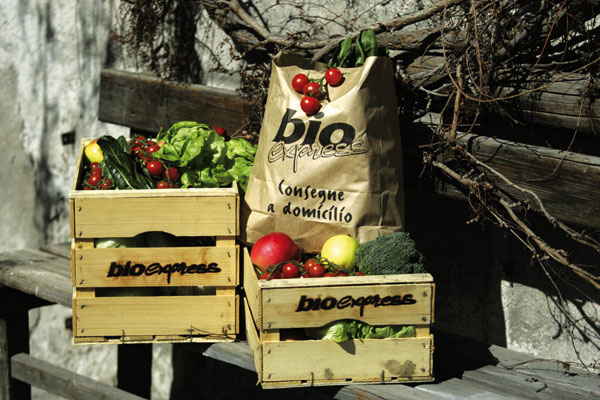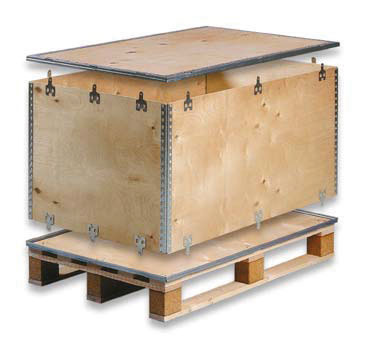Wood packaging – Data 2011
DATA AND FACTS Pallets, industrial packaging and crates for fresh produce: market figures
Wood packaging manufacturers operating in Italy number approximately 2,401 and employ around 10,700. Approximately 12% of manufacturers specialize in the production of bins and crates for fresh produce, and 49% in pallets (this field also includes repairers), while 39% are industrial packaging producers. The market also includes suppliers of raw materials for making wood packaging and importers of empty packaging.
67% of operators in the wood packaging sector are based in Northern Italy, while 13.5% are based in Central Italy and 19.5% in Southern Italy, including Sardinia and Sicily.
 Destinations of use
Destinations of use
Wood packaging can be divided into three types: pallets, industrial packaging and crates for fresh produce.
The first category is used indifferently across many different sectors; in fact, there are very few manufacturing sectors that do not require the use of pallets. A study of the most important areas of use provides the following division: 15.8% for liquid products (beverages and condiments), 31.7% for food, 31% for non-food broadscale consumption goods (clothing, cosmetics, pharmaceuticals, domestic products etc.), 7.7% for industrial chemical products (coloring agents, lubricants, etc.) and 13.8% for other non-food products (construction materials, electromechanical devices, etc.).
More than 70% of industrial packaging, the second category, is used in the field of mechanics, electromechanics, spare parts, etc., while the remaining 30% concerns products such as spools for tubing and wiring, various crates for wines and spirits, cork stoppers, etc.
Generally speaking, about 80% of this packaging is used for bulky products, in many cases ad hoc, and the remaining 20% concerns boxes for equipment, spare parts, slats, crates for spirits, etc.
Lastly, 85% of crates are used in the fresh produce sector, while the remaining 15% is destined for the sectors of fish products, gardening, etc.
The numbers: production and turnover
Overall, wood packaging reached a 2011 turnover of 1,650 million euro, corresponding to a production of 2,401 t/000 (-1% compared to 2010): a drop that reflects the consequences of the economic crisis affecting the industrial system as a whole. Total foreign trade showed 194 t/000, a 10.8% growth compared to 2010, and imports of 349 t/000 (14.8% growth): the significant increase pertains exclusively to the pallet sector.
The trade balance nets negative at -94 t/000, continuing a trend that has characterized the last thirty years.
Total apparent consumption in 2011 amounted to 2,556 t/000, about the same as the previous year.
During 2011, domestic demand saw a progressive drop starting in autumn in the wake of the worsening Italian and European economies.
Industrial packaging
In the wider context of wood packaging, industrial packaging represents a specialized management system whose special nature relates to the willingness of concerns operating in the sector to manage their product distribution services using containers designed ad hoc.
In 2011, this area had a production of 576 t/000, marking limited growth of 0.5%.
Foreign trade was modest, limited to crates for spirits and cork stoppers.
70-75% of products come from specialized concerns that work for multiple customers; the remaining 25-30% refers to in house production or concerns that work exclusively for a single customer.
The main sector within industrial packaging, making up approximately 80% of business, consists in large crates for transporting machinery or parts. Containers sometimes constitute an alternative to wooden industrial packaging.

Pallets
Pallets are the most widely distributed transport packaging type in terms of different sectors. They can be divided into four categories according to building material and target market in Italy: wood pallets (92%), plastic pallets (7%), cardboard pallets (0.9%) and metal pallets (0.1%); the latter are used exclusively for internal handling in heavy industry production sites.
Wood pallets. This is the most widespread type both in Italy and worldwide for reasons of economy and safety.
These pallets are made from various wood materials (fir, pine, beech and poplar): virgin material has high performance and resistance. Disposable pallets are undergoing progressive replacement by reusable ones.
There is an ongoing trend of renting pallets, with a resulting increase in custom pallets and progressive growth of production of this type.
In 2011, production of new pallets, plus the repaired and recirculated EPALs, was 1,545t/000 (-1.5% compared to 2010).
The drop was caused by an increase in reusable pallets, as well as a general slump in the manufacturing industry generally.
Both imports and exports grew. Domestic apparent consumption was substantially the same as that of 2010.
 Crates. Handling of fresh fruit&vegetables pertains to two wood packaging types: bins and crates. The former are employed for transporting fresh produce from the field to warehouses, while crates are used for transport from storage to distribution (retail, marketplaces, etc.). Wood crates are officially all “disposable”, but in actual practice there is an informal reuse that, according to some operators in the fresh produce sector, amounts to approximately 3-5%. Production of wood crates in 2011 amounted to 280 t/000 (-4% compared to 2010). Over the years this packaging type’s market position has shrunken progressively: production destined for sale is estimated to have a 2011 share of 22% (30% in 2005).
Crates. Handling of fresh fruit&vegetables pertains to two wood packaging types: bins and crates. The former are employed for transporting fresh produce from the field to warehouses, while crates are used for transport from storage to distribution (retail, marketplaces, etc.). Wood crates are officially all “disposable”, but in actual practice there is an informal reuse that, according to some operators in the fresh produce sector, amounts to approximately 3-5%. Production of wood crates in 2011 amounted to 280 t/000 (-4% compared to 2010). Over the years this packaging type’s market position has shrunken progressively: production destined for sale is estimated to have a 2011 share of 22% (30% in 2005).
Thanks to their improved look, they now also serve a function of communication. According to the latest estimates, their market presence should stabilize with the current values.
Plinio Iascone
Istituto Italiano Imballaggio




















